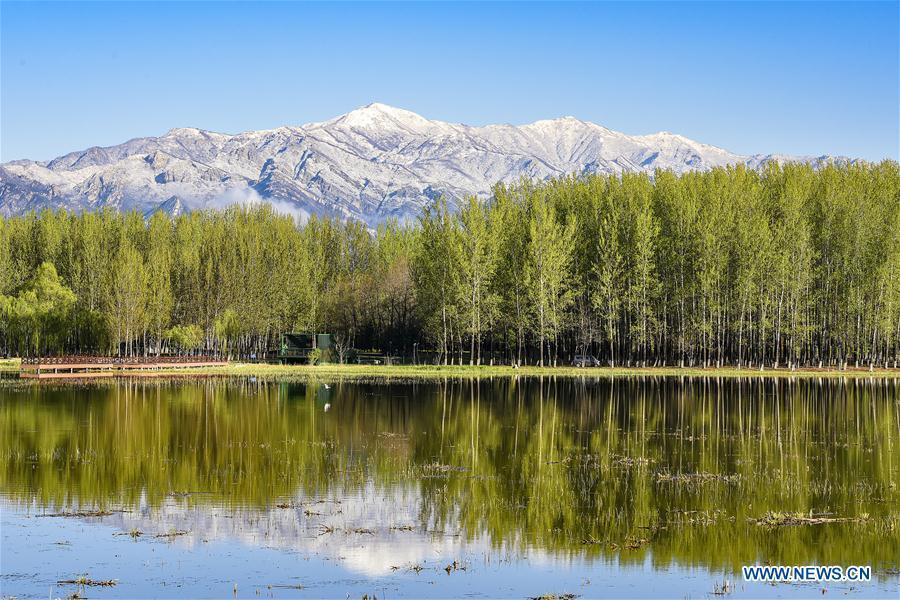It’s time that China shared its successful nature conservation stories with the world.
In the early days of China’s reform and opening-up in the 1980s and ’90s, China had much to learn from the rest of the world about development and environment. But now the shoe is on the other foot. It’s time that China shared its examples with the world.
Erik Solheim
Having hosted the first part of the UN Biodiversity Conference in Kunming in 2021, China will host the second part later this year, with the parties meeting to conclude negotiations and decide on a new global biodiversity framework.
In October, the Parties to the Convention on Biological Diversity reaffirmed their commitment to achieving the 2050 Vision of “Living in Harmony with Nature”, adopting the Kunming Declaration. President Xi Jinping also launched a 1.5 billion yuan ($235.4 million) fund for the protection of biodiversity in developing countries.

This year’s Government Work Report pledged to better conserve mountains, rivers, forests, farmland, lakes, grassland and desert ecosystems, protect biodiversity and advance the development of the national park-based nature reserve system.
“With these efforts, we will make our common home greener and more beautiful,” Premier Li Keqiang said while delivering the Work Report. In addition, Li vowed to promote high-quality cooperation under the Belt and Road Initiative.
Last year, China also finished drawing up ecological conservation red lines nationwide, designating 25 percent of its land area as crucial for ecosystems. The red line system is an innovative tool for better conserving nature all over China, but in particular in heavily populated areas such as the Yangtze River Delta and the Pearl River Delta. It may not be easy to copy in other parts of the world, but other nations might take inspiration from it.
China has also put in place a 10-year fishing ban in the Yangtze River and restrictions on fishing in the upper Yellow River. This is to ensure that fish come back when ecosystems are restored.
Having served as Norway’s minister for the environment, I understand the short-term pain that such bans inflict on the local population. But the long-term gain greatly outweighs the short-term pain. Fish will return in abundance when nature bounces back. We have been through similar experiences in the North Sea of Norway, restoring the once depleted stocks of herring and cod. Today our fishermen enjoy rich fruit from this work, which we did in cooperation with Russia, Iceland and the European Union.
China is also working on an ambitious plan to build an extensive national park system initially covering a stunning 230,000 square kilometers, dedicated to protecting the habitat of endangered species. I was particularly excited to learn that China has built a national park for giant pandas. In 2017, I visited Sichuan province and was amazed to find that the giant pandas are increasing in numbers and well protected using the most modern digital tools. National parks originated in the United States. Now China is taking them to a higher level.
President Xi promised last year that China will plant trees in an area the size of Belgium every year. The US space agency NASA recently published a report saying that contrary to what many people think, the surface of our planet is greener than it was in the past. And that is largely thanks to tree planting in China.
The greening of the Kubuqi Desert in the Inner Mongolia autonomous region is among the best examples of this all-out greening effort. Through hard and smart work, the people of Kubuqi transformed the “sea of death” into a lush oasis.
At the core of the “Kubuqi Spirit “is the idea that desert is not a threat but an opportunity for economic growth and poverty alleviation. The people of Hanggin Banner developed the “Kubuqi model” as a win-win approach, enjoying three sources of income: farm products, such as rice liquor, that can survive in dry places, renewable energy and tourism.
China has some wonderful stories to tell about nature preservation in its overseas investments, too. The Cattle Hill Wind Farm in Tasmania, Australia, which is owned by Power China Group and Goldwind Capital Australia, powers 63,500 Tasmanian homes. It has increased the state’s renewable energy generation by approximately 5 percent and uses the innovative “identiflight” system. This is an avian detection system that provides effective means to protect select species from colliding with rotating wind turbine blades. Turbines shut down 400 times a day when eagles approach. So far, the technology has proved highly successful in protecting the local population of wedge-tailed eagles.
In the early days of China’s reform and opening-up in the 1980s and ’90s, China had much to learn from the rest of the world about development and environment. But now the shoe is on the other foot. It’s time that China shared its examples with the world.

The author is former executive director of the United Nations Environment Programme and is currently president of the Belt and Road Initiative Green Development Institute.
Source: China Daily Global, 2022-04-18. https://www.chinadaily.com.cn/a/202204/18/WS625cbab0a310fd2b29e577bb.html
Leave a Reply
You must be logged in to post a comment.